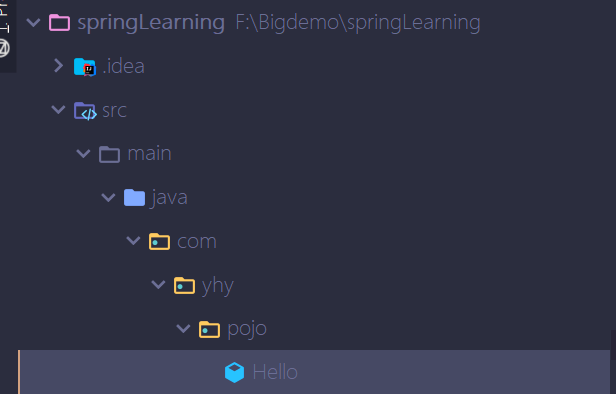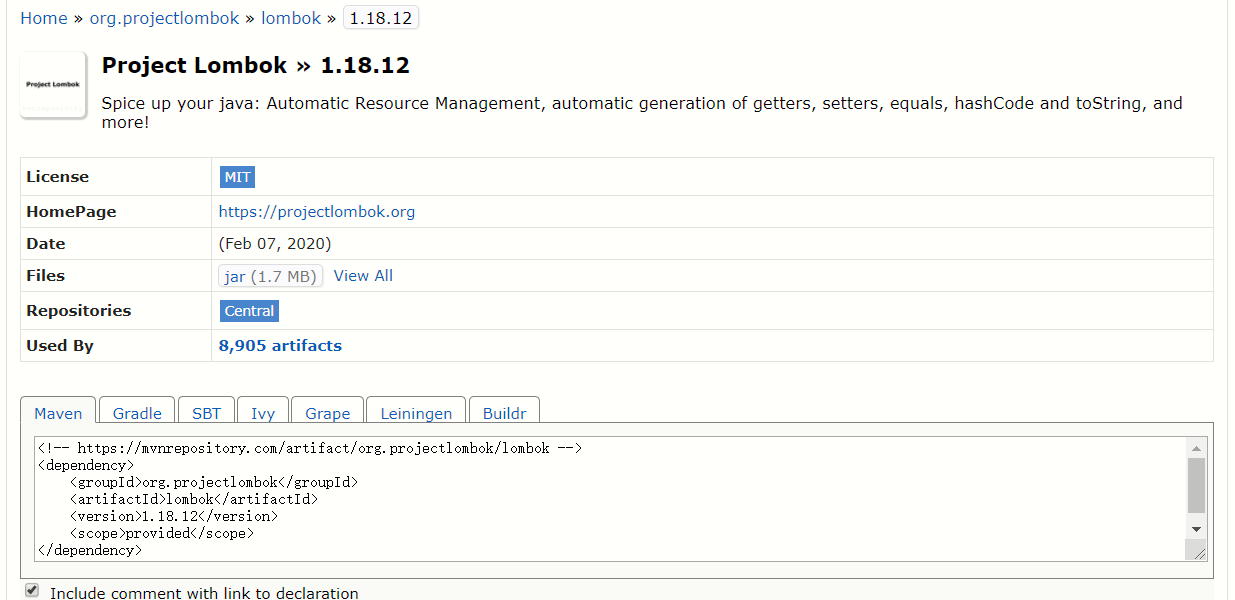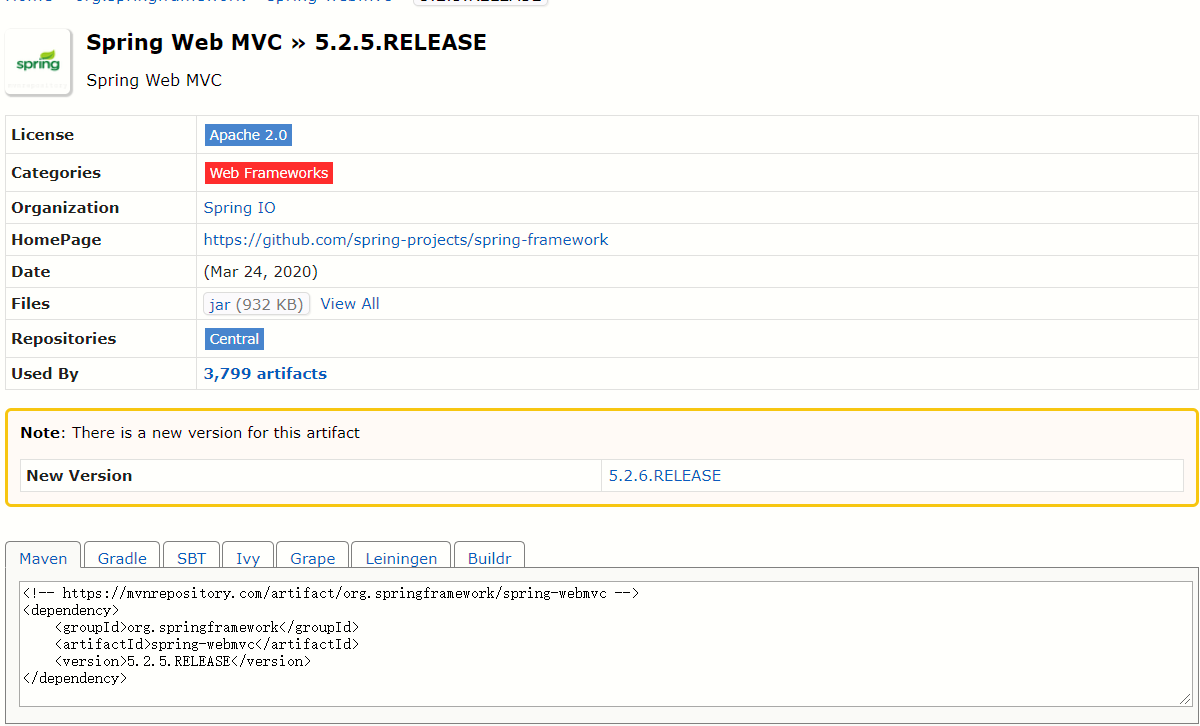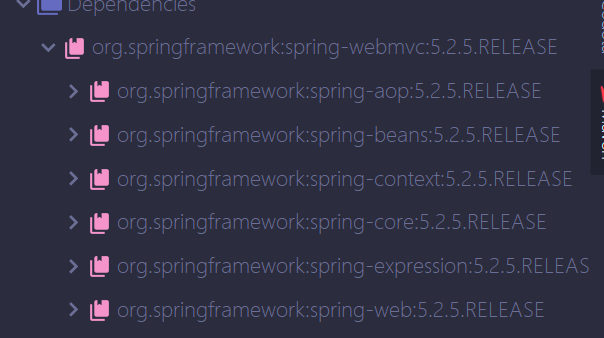springhello程序
先写个实体类

配置
pom.xml
导入lombok纯粹是为了省一些写代码的操作,使用注解的方式来省下时间,但是初学者还是非常不建议使用这个

导的spring是下面这个mvc的web架构的包,可以使用

里面的包里面有这些分支,可以使用。

<?xml version="1.0" encoding="UTF-8"?>
<beans xmlns="http://www.springframework.org/schema/beans"
xmlns:xsi="http://www.w3.org/2001/XMLSchema-instance"
xsi:schemaLocation="http://www.springframework.org/schema/beans
https://www.springframework.org/schema/beans/spring-beans.xsd">
<!--这里的bean是一个对象
id是变量名
class是new的对象
property相当于给对象中的属性配置一个值
由spring创建的,原来是
对象由spring注册管理等
-->
<bean id="hello" class="com.yhy.pojo.Hello">
<property name="str" value = "hello world"/>
</bean>
<!-- more bean definitions go here -->
</beans>
修改可以直接在xml文件中修改,其他的不用理了。所谓的IOC就是对象由spring创建、管理、装配。
核心
查看DeaultListableBeanFactory

IOC(Inversion of Control)
The
org.springframework.beansandorg.springframework.contextpackages are the basis for Spring Framework’s IoC container. --spinng官网上的一句华
直译过来就是这里两个包是spring框架中的IOC容器的基础,在上面的maven截图中,也是可以看到spring mvc里面有这两个包,要不然也不可能使用完整的spring框架。所以想学会这个IOC,这两个包的了解是必不可少的。
IOC创建对象
- 默认是无参构造方法
- 也可以有参构造(也是DI中的构造器注入)
环境
先总体的项目小测配置以及定义的各个类

实体类
package com.yhy.pojo;
public class Hello {
private String str;
public Hello(String str) {
this.str = str;
}
/**
* @return String return the str
*/
public String getStr() {
return str;
}
/**
* @param str the str to set
*/
public void setStr(String str) {
this.str = str;
}
public void show() {
System.out.println(str);
}
}
测试类
@Test
public void test()
{
//获得spring的上下文内容
//拿到容器
ApplicationContext context = new ClassPathXmlApplicationContext("beans.xml");
//使用容器获得对象
Hello hello = (Hello) context.getBean("hello");
hello.show();
}
使用有参构造有几个方法
在beans.xml中使用三种方式
- 使用参数名
<bean id="hello" class="com.yhy.pojo.Hello">
<constructor-arg name="str" value="yhy"/>
</bean>
- 使用下标索引
<bean id="hello" class="com.yhy.pojo.Hello">
<!-- 从零开始的索引值,多个参数的时候再使用别的参数 -->
<constructor-arg index="0" value="hello world"/>
</bean>

- 使用参数的类型来配置
<bean id="hello" class="com.yhy.pojo.Hello">
<constructor-arg type="java.lang.String" value="hello spring"/>
</bean>

其他
在.xml配置文件中还有两个选项。
